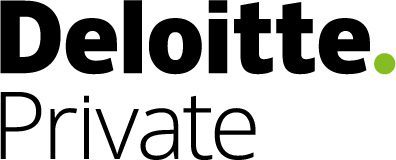
Lease debt will reach $3 trillion by end of 2019[1] It will be on the balance sheets of U.S. listed companies. The driving force is Accounting Standards Codification (ASC) Topic 842, Leases, the Financial Accounting Standards Board's (FASB) new standard for lease accounting.
ASC 842 changes how companies account for leases. This is intended to provide investors with a clear picture of what companies owe through lease obligations such as equipment and real estate. ASC 842 became effective in January 2019 for calendar-end public companies. In February 2019, nearly half of executives at publicly traded companies surveyed by Deloitte[2] told us that the time and effort they spend on compliance will continue to grow.
In July 2019, the FASB tentatively postponed the effective date for private entities (private companies), but the postponement remains committed to rigorous implementation efforts.[3] What can private companies discover from public companies' implementations of ASC 842? Here are some highlights.
1. Not all leases are clearly labeled “lease.”
Leases can be incorporated into many different types of contracts, but they are not always labeled or defined as “lease” within those contracts. Transportation services contracts, information technology (IT) services contracts, and electronic manufacturing arrangements are common examples of contracts with embedded leases. Essentially, if a contract conveys the right to control the use of a particular asset for a period of time in exchange for consideration, it is It could be a lease.
2. Leases are visible across your organization.
As public companies began the transition to ASC 842, many discovered leases across numerous divisions, business units, and office locations, tracked in various management systems, intranet sites, and desktop spreadsheets. . Documents were often stored as images, searchable PDF files, or hardcopy, and locating the entire lease required significant research effort.
3. Analyzing lease data requires considerable judgment.
Under ASC 842, companies must track key dates, payment amounts, and other relevant information regarding the rights of use conveyed in the contract. These provisions can be complex and amendments may make them even more so. Add in foreign language leases that reflect the nuances of the local market, and it becomes clear that considerable thought is required to interpret the data required for the report.
4. Expect to source data from multiple locations.
Lease agreements may not contain everything needed to meet the accounting and disclosure requirements of ASC 842. For example, determining appropriate discount rates and fair market values for leased assets often requires management judgment and, in some cases, the use of quantitative modeling. There may be other data requirements that are not directly derived from the lease agreement and may require alternative data sourcing approaches.
5. Controls and processes may require upgrades.
While traditional U.S. GAAP may have left room for a decentralized leasing process, it is often not practical and efficient under ASC 842. In addition to the internal controls and processes necessary for a company to prepare financial statements in a clear and efficient manner, there are also controls related to impairment. Accounting, adjustment accounting, and reconciliation of actual and contractual cash flows.
6. Technology can help, but it may require ample runway.
The ASC 842 rules require significantly more data and calculations to create the required journal entries and disclosures. As a result, manual processes can become impractical for lease data maintenance as well as compliance and management reporting. Implementing a technology solution can take longer than expected, so before implementing a technology solution, understand how long it will take to implement, as well as confirm that the technology solution has the applicable functionality. It's worth taking the time to do it.
7. There are many variables in the incremental borrowing rate.
ASC 842 requires public company lessees to record leases on their balance sheets using secured incremental borrowing rates (IBR), which can be a complex process. Fortunately, private companies have an alternative to using a risk-free rate instead of his IBR. That said, choosing a risk-free rate generally results in an increase in lease liability, and the election is no longer valid once the company goes public. In that case, companies will have to go back and calculate their own IBR separately. Just having existing debt may not be enough to determine a company's IBR. IBR depends on the nature of a company's debt, the lease term, and the lease currency. Nuances in rate setting, such as identifying appropriate entity-specific credit risk adjustments and the impact of full collateralization, make IBR more complex than many companies expect.
8. Other departments may also need to be involved.
Implementing ASC 842 is more than just an accounting exercise. For example, procurement may be required to bring together the entire fleet of leaseholders. Tax departments may need to determine deferred tax assets and deferred tax liabilities. If a lease accounting software solution includes lifecycle management functionality, real estate professionals should review it to determine whether it is useful from their perspective. And, of course, IT departments must approve and support the technology implementation. Business units should be involved as they may need to monitor and maintain closer leases.
9. All affected groups can benefit from the adoption of ASC 842.
Businesses cannot avoid the new normal and must make the most of it. A carefully thought-out implementation of ASC 842 enhances your analysis, modeling, and predictive capabilities. At the same time, new lease accounting processes can jump-start related efforts such as procurement or real estate management and optimization, contract management, compliance and contract digitization. result? Enable more effective decision-making and potentially improve performance across your portfolio of leased assets.
conclusion
The new standard significantly increases the number of leases that companies must record on their balance sheets. The good news is that many of the major obstacles to ASC 842 implementation are now known, and each is manageable. With proper planning, private companies can prepare for a smooth transition to this breakthrough update in lease accounting. Click here to learn more about our audit and assurance services for private companies.
***
This publication contains general information only and Deloitte does not provide accounting, business, financial, investment, legal, tax, or other professional advice or services by means of this publication. . This publication is not a substitute for such professional advice or services, and should not be used as the basis for any decisions or actions that may affect your business. You should consult a qualified professional advisor before making any decisions or taking any actions that may affect your business.
Deloitte is not responsible for any loss suffered by anyone relying on this publication.
The services described herein are illustrative in nature and are intended to demonstrate our experience and capabilities in these areas, but are applicable to Deloitte & Touche LLP's audit clients (including our affiliates) Due to our independence restrictions, we may not be able to provide certain services. Based on individual facts and circumstances.
 About Deloitte
About Deloitte
“Deloitte” refers to Deloitte Touche Tohmatsu Limited, a UK private limited company by guarantee (“DTTL”), its network of member firms, and one or more of their associated entities. DTTL and each of its member firms are legally separate and independent entities. DTTL (also known as “Deloitte Global”) does not provide services to clients. In the United States, Deloitte refers to one or more of his DTTL's U.S. member firms, their affiliated entities operating in the United States using the “Deloitte” name, and their respective affiliates. Based on public accounting rules and regulations, certain services may not be available to certify clients. For more information about our global network of member firms, please visit www.deloitte.com/about.
Copyright © 2019 Deloitte Development LLC. All rights reserved.
[1] “Big accounting changes will add $3 trillion to debt on corporate balance sheets,” Yun Lee, CNBC, February 16, 2019, https://www.cnbc.com /2019/02/15/a-big-change- in-accounting-puts-3-trillion-on-corporate-books.html.
[2] Deloitte Development LLC “Lease Accounting Compliance Work Won’t End After Public Filing in Q1 2019” https://www.slideshare.net/DeloitteUS/lease-accounting-compliance-work-wont-end-after- q1-2019-public-submitted documents (April 1, 2019)
[3] “FASB tentatively changes effective date of new accounting standard,” Zach Weston and Mark Bolton, Deloitte & Touche LLP, July 2019, https://www2.deloitte.com/us/en/pages/audit /articles/heads-up-newsletter.html.

